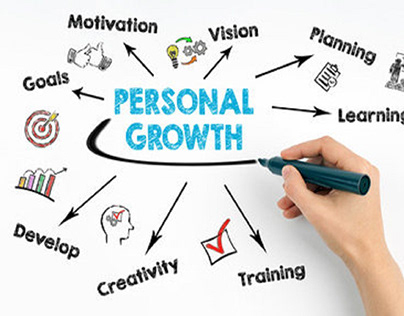Many people want more than just a job—they want a career that feels meaningful and fulfilling. Designing a career you actually love means finding work that matches your values, interests, and strengths while giving you a clear sense of purpose. This approach helps people enjoy their work and stay motivated over time.
Creating a purposeful career starts with understanding what matters most to you and exploring paths that fit those priorities. It requires thoughtful choices and planning, not just chasing what seems popular or easy. When a career aligns with personal goals and passions, daily work feels more rewarding and less like a routine.

This post will guide readers through practical steps to shape a career that brings real satisfaction. It shows how anyone can make intentional moves toward meaningful work with the right mindset and tools.
Key Takeaways
- A career must align with personal values to feel purposeful.
- Clear goals and planning help create fulfilling work paths.
- Staying engaged requires ongoing self-reflection and growth.
Understanding Purpose in Your Career
Purpose in a career involves more than just a job title or paycheck. It connects to what drives a person, the values they hold, and how their work fits into a bigger picture. Purpose gives meaning and guides decisions day to day.
Defining Career Purpose
Career purpose means having a clear reason for choosing and sticking with a job. It answers the question: Why do I do this work? It often links to personal passions, skills, or goals. A clear purpose helps someone stay focused during challenges.
People with career purpose feel their tasks matter beyond just completing assignments. It may be about solving problems, helping others, or creating something new. Defining this purpose starts with asking what work feels meaningful and why.
Personal Values and Motivation
Values are the beliefs and principles that shape choices. Identifying core values helps align work with what matters most. For example, someone who values honesty may seek transparent workplaces.
Motivation fuels effort and persistence. When work matches personal values, motivation stays strong. If work feels disconnected from values, motivation drops, and dissatisfaction grows.
To clarify this, a person might list values like creativity, fairness, or growth. Then, they compare these to their current job to see if the match is strong or weak. This process helps them decide if a career change or adjustment is needed.
Impact of Purpose on Professional Fulfillment
Having purpose in work improves job satisfaction and well-being. When people see their career as purposeful, they report less stress and burnout. They feel energized and more engaged every day.
Purpose also affects performance. Purpose-driven workers often take initiative and solve problems faster. Their commitment can lead to promotions or recognition.
According to studies, employees with clear career purpose are 3 times more likely to feel fulfilled. Organizations benefit from this as well, through improved teamwork and lower turnover rates.
Self-Reflection and Personal Assessment
A clear understanding of strengths, skills, and long-term goals helps guide career choices. This involves looking closely at what someone enjoys, what they do well, and where they want to be in the future.
Identifying Strengths and Passions
He or she should start by listing activities they enjoy and tasks they find easy or fulfilling. These are often clues to natural strengths and true passions. Asking friends or coworkers for feedback can reveal abilities that may not be obvious to them.
Questions to consider:
- What tasks come naturally?
- What topics excite them most?
- When do they feel most energized at work or in hobbies?
Highlighting these answers narrows down potential career paths that align with who they are and what they love doing.
Evaluating Skills and Interests
Next, individuals should examine their current skills and the areas they want to develop. This includes both hard skills like coding or writing and soft skills like communication or problem-solving.
Making a list helps identify gaps and strengths. Interests guide choices about which skills to improve. For example, if one enjoys helping others, building skills in counseling or customer service might make sense.
Using assessments or career tests can provide more clarity. This step is about matching what they know and want to learn with real-world career options.
Clarifying Long-Term Aspirations
Thinking about the future helps focus present efforts. He or she should imagine where they want to be in 5 to 10 years. This could involve job titles, work environments, or lifestyle goals.
Writing down these aspirations creates a clear target. Aspirations might include leadership roles, creative freedom, or steady growth. Those goals shape which jobs to pursue and what skills to gain.
Clarity at this stage prevents aimless job changes and encourages deliberate career moves based on personal values and ambitions.
Aligning Career Choices With Core Values
Choosing a career that feels right means understanding what matters most in a job and life. This involves looking carefully at the company’s culture and how it matches personal values, as well as finding a balance between money and meaningful work.
Assessing Organizational Culture Fit
A person should start by researching the company’s mission, work environment, and leadership style. It helps to read reviews from employees and talk to current or former workers. Key questions to ask include: Does the company support teamwork, innovation, or work-life balance? Are diversity and ethics important there?
Matching these factors with one’s own beliefs can prevent future conflicts. For example, someone who values social responsibility might avoid companies with poor environmental records. Choosing a workplace that respects core values leads to greater job satisfaction and motivation.
Balancing Financial and Personal Goals
Money matters, but it should not be the only factor in career decisions. A person must clearly list out both financial needs (like salary and benefits) and personal goals (such as job satisfaction or flexible hours).
Creating a simple table with two columns — Financial Goals and Personal Goals — can help clarify priorities:
| Financial Goals | Personal Goals |
|---|---|
| Steady income | Job enjoyment |
| Health benefits | Meaningful work |
| Savings for future | Work-life balance |
If financial goals are met but personal goals are ignored, burnout or unhappiness can occur. Ideally, a career choice meets enough financial needs while still supporting personal values for a balanced life.
Exploring Career Pathways
Career options vary widely, with distinct differences between established jobs and newer roles. Understanding these can help someone choose a career that fits their skills and interests. Both traditional and emerging paths offer unique benefits and challenges.
Traditional Versus Non-Traditional Roles
Traditional careers include roles like teachers, doctors, engineers, and accountants. These jobs often follow clear paths with defined education and experience requirements. They usually offer job stability and predictable advancement.
Non-traditional roles may include freelancing, gig work, and jobs in new industries like digital marketing or app development. These careers often require creativity and self-direction. People in these roles might face less stability but enjoy more flexibility.
Choosing between traditional and non-traditional depends on personal goals. Someone seeking security might lean toward traditional roles. Others valuing independence may prefer non-traditional paths.
Emerging Opportunities in the Job Market
New technologies and changing industries create fresh job opportunities regularly. Fields like renewable energy, artificial intelligence, and remote work show rapid growth. These jobs often demand new skills and ongoing learning.
Examples include solar panel installers, AI specialists, and virtual team managers. These roles can offer higher pay and chances to work on innovative projects. They may also require adapting to fast-changing technology.
Job seekers should research growth areas and consider training programs. Staying updated boosts the chance to find meaningful work in emerging fields.
Designing a Career Plan
A clear career plan helps guide decisions and track progress. It involves defining specific goals and creating steps that make those goals achievable. Knowing what milestones to aim for and how to get there makes a career path less overwhelming.
Setting Short- and Long-Term Goals
He should start by identifying what he wants to achieve soon and in the future. Short-term goals might include learning a new skill, completing a project, or gaining experience. These goals should be specific and measurable, like finishing an online course by the end of the month.
Long-term goals focus on where he wants to be in 3-5 years. This could be earning a promotion, switching careers, or starting a business. Setting clear timelines helps keep the plan focused. Writing goals down and reviewing them regularly ensures he stays on track.
Mapping Out Actionable Steps
Next, breaking each goal into concrete actions makes progress manageable. For example, if learning a skill is a goal, steps might include scheduling weekly practice, finding a mentor, or attending workshops.
He can use a simple checklist to track these tasks. Prioritizing actions based on deadlines and importance helps avoid feeling stuck. Adjusting the plan when needed keeps it realistic and achievable.
Using tools like calendars or apps to plan tasks ensures nothing is overlooked. Consistent effort toward these small steps builds momentum towards bigger career aims.
Building Skills for a Purposeful Career
Success in a meaningful career depends on developing relevant skills and creating strong professional connections. These elements help people stay competitive and find new chances to grow.
Continuous Learning and Growth
People who want a purposeful career must keep updating their skills. This can include taking classes, reading industry news, or practicing new tools and techniques.
Setting clear learning goals helps focus time and effort. For example, learning a new software important to the field or improving communication skills can make a big difference. Regular self-assessment also shows which areas need improvement.
Employers value adaptability. Showing a commitment to learning signals readiness for new challenges and positions.
Networking for Opportunity
Building relationships with others in the field opens doors. Networking can happen at conferences, online platforms like LinkedIn, or informal meetups.
Effective networking means more than collecting contacts. It involves creating genuine connections by sharing knowledge and supporting others.
Keeping a list of contacts and following up regularly helps maintain relationships. Mentors found through networking can provide valuable advice and guidance.
Strong networks often lead to job leads, partnerships, and collaborations that boost a career’s purpose and satisfaction.
Navigating Career Transitions
Switching careers can feel uncertain but can be managed successfully with the right mindset and tools. Understanding how to handle fear and recognizing relevant skills helps make transitions smoother.
Overcoming Fear of Change
Fear of change often comes from the unknown and the risk of failure. To manage this fear, it helps to break down the transition into smaller, clear steps.
Setting specific goals, like updating a resume or networking with five new contacts per week, creates a sense of control. It also allows for measuring progress.
People can reduce fear by seeking advice from mentors or career coaches. These experts provide guidance and help build confidence.
Changing a mindset from focusing on what could go wrong to what can be learned helps reduce anxiety. Preparing for challenges makes the process less intimidating.
Leveraging Transferable Experience
Transferable skills are abilities that can be used across different jobs or industries. Examples include communication, problem-solving, and project management.
Identifying and listing these skills helps show employers how past experiences relate to a new role. For example, managing a team in retail can translate to leading projects in a marketing job.
Creating a skills inventory clarifies strengths. It often includes soft skills, technical skills, and industry-specific knowledge.
Highlighting achievements in past jobs with clear examples can make a resume stand out. This shows adaptability and readiness for new responsibilities.
Maintaining Work-Life Integration
Balancing personal and work life is key to staying productive and healthy. It involves clear decisions about time and energy. Managing this balance well helps avoid burnout and keeps motivation steady.
Setting Boundaries for Wellbeing
Setting firm limits on work hours helps prevent stress. They should define when work stops and personal time starts. This might mean turning off email alerts after a certain hour or not taking calls on weekends.
Using a dedicated workspace also helps. It creates a clear physical division between work and home life. This separation can reduce distractions and improve focus during work hours.
Communicating boundaries to coworkers and family is important. Clear sharing of work times can avoid misunderstandings. It also lets people respect his or her schedule better.
Here’s a simple list of key boundary practices:
- Work only during set hours
- Turn off work notifications outside of those hours
- Use a specific room or area for work
- Inform others of availability
These steps support both mental health and work productivity.
Sustaining Motivation and Engagement
Maintaining motivation and staying engaged is essential for a fulfilling career. It requires regular recognition of achievements and the ability to bounce back from challenges.
Celebrating Success and Progress
Recognizing even small wins helps keep motivation high. People should track their goals and note progress to see how far they’ve come. This can be done with daily or weekly check-ins.
Using simple tools like journals or apps to mark achievements makes progress visible. Sharing successes with colleagues or friends can boost confidence and create a support network.
Breaking large projects into smaller tasks with clear milestones makes achievement feel more manageable. Celebrating each step reinforces a positive mindset and encourages continued effort.
Staying Resilient Through Setbacks
Setbacks are common in any career, but handling them well is key to long-term success. It helps to separate mistakes from personal value to avoid discouragement.
Reflecting on what went wrong and learning from it allows for growth. Keeping a problem-solving attitude instead of focusing on blame supports resilience.
Building a reliable support system of mentors or peers provides perspective during tough times. Taking short breaks to recharge can prevent burnout and keep focus sharp.
Measuring and Evaluating Career Fulfillment
Knowing if a career is fulfilling requires regular check-ins on progress and satisfaction. This means looking at both skill growth and personal happiness in work. Clear tools and habits help measure these areas accurately.
Tracking Personal and Professional Growth
Tracking personal and professional growth means setting clear goals and checking them often. One way is to keep a career journal. Here, notes on new skills, completed projects, and lessons learned are useful.
Another tool is using SMART goals: Specific, Measurable, Achievable, Relevant, and Time-bound. This helps track progress in a clear, step-by-step way.
Regular feedback from managers and peers also shows where growth is happening. For example:
| Growth Area | How to Track | Frequency |
|---|---|---|
| Skills Learning | List new skills and training | Monthly |
| Project Success | Record completed projects | After each project |
| Feedback | Collect and review comments | Quarterly |
This tracking lets a person see if their efforts are leading to real career improvement and satisfaction.











